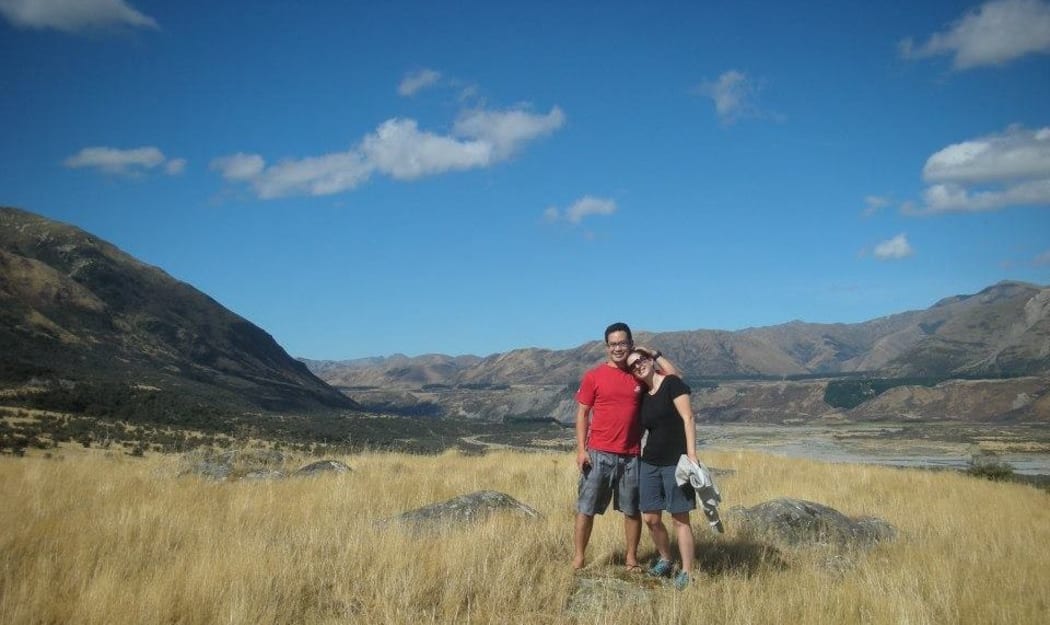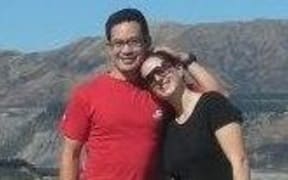An alpine specialist says it was lucky that no one else died alongside the two climbers who became stranded on Mt Taranaki last Labour weekend.

Hiroki Ogawa and Nicole Sutton. Photo: NZ POLICE
Geoff Wayatt appeared as an expert witness at the inquest in New Plymouth into the deaths of Hiroki Ogawa and Nicole Sutton in atrocious weather during a New Zealand Alpine Club trip.
He said the couple's decision to continue over the Shark's Tooth near the summit with two other climbers was a key moment because descending members of their extended party had warned of the oncoming weather.
They then became separated from their companions John Salisbury and Kirsten Spencer and all four were stranded on the mountain with no overnight gear.
"It was fortunate there were not more fatalities," Mr Wayatt said.
It was credit to Mr Salisbury and Ms Spencer's fortitude that they were able survive, he said.
Mr Hiroki and Ms Sutton did not descend much further after becoming separated which was also a contributing factor to their deaths.
Mr Wayatt said they hunkered down at 2320 metres, just 200m below the summit and in icy conditions they were unable to build decent shelter and were left exposed to the full force of the weather.
"Being forced to bivouac without shelter was not survivable for an extended period and had fatal consequences."
Mr Salisbury and Ms Spencer constructed a bivouac at 1500 metres and were able to walk out the next day.
Counsel for the families, Hanne Janes, asked Mr Wayatt if it was conceivable that the four climbers believed they were heading down the mountain the fastest and safest way by heading to the North Ridge.
He conceded this was possible but it was a strange decision to continue to head up when everyone else went down.
Ms Janes argued it was possible the group had not got the message that the weather ahead was extreme.
Mr Wayatt said the group from the Auckland branch of the New Zealand Alpine Club had only done minimal planning for the trip to Mt Taranaki and only a small proportion of the climbers were experienced.
He said the decision by a group of 10 climbers to tackle the summit via the East Ride route in deteriorating winter conditions was also a poor one.
"Options of a shorter climb rather than a summit attempt should've been considered."
Mr Wayatt also made some criticism of the search and rescue operation.
He said getting members of the Ruapehu Alpine Rescue Organisation (RARO) to Mt Taranaki earlier would have been preferable.
RARO members did not begin rescue attempts until midnight on the Sunday and had effectively lost 12 hours.
Central Districts Search and Rescue co-ordinator, Sergeant Bill Nicholson, told the inquest a misunderstanding meant a helicopter was not used to transfer RARO to Mt Taranaki.
Mr Nicholson, said a pilot from Taupo was able to pick up RARO members at National Park and take them to Mt Taranaki on the Sunday morning, but a message that conditions were unsuitable for a fixed-wing aircraft was misconstrued to also apply to helicopters.
Three RARO members had earlier flown across in an Air Force helicopter, but 13 others had to drive to Mt Taranaki.
Earlier Ms Janes, had told Senior Sergeant Thomas McIntyre the decision not to send the Air Force helicopter back to pick up members of RARO had effectively delayed their deployment by 12 hours.
Mr McIntyre, who was operations manager, said it was decided it was too risky to fly back to National Park because there was no guarantee the RARO members could be picked up and he wanted the chopper available if a rescue by air became possible.
Michael Parker, the pilot of the Taranaki Community Trust Rescue Helicopter, told the inquest he did not think any helicopter would have been able to assist in the rescue bid.
He was alerted to the emergency on the Saturday night but was unable to fly because of the weather conditions and he flew twice on the Sunday, but was forced back each time for safety reasons.
Mr Parker said it was unlikely there was a window of opportunity to fly to the stranded climbers and warned of a "sucker's gap" phenomenon where they skies were clear but there is still a lot of wind, turbulence and down-draughts to contend with.


